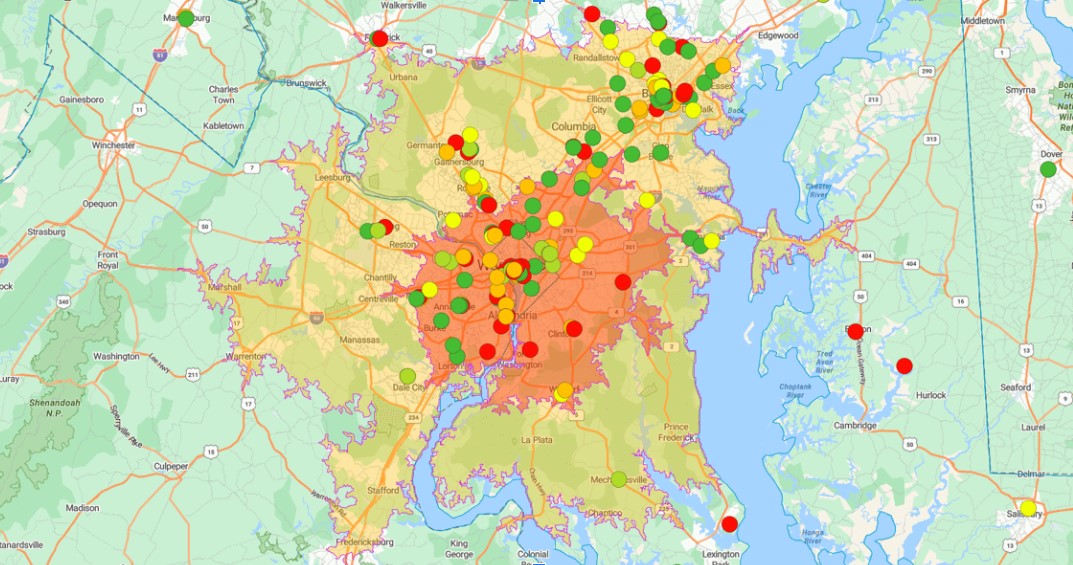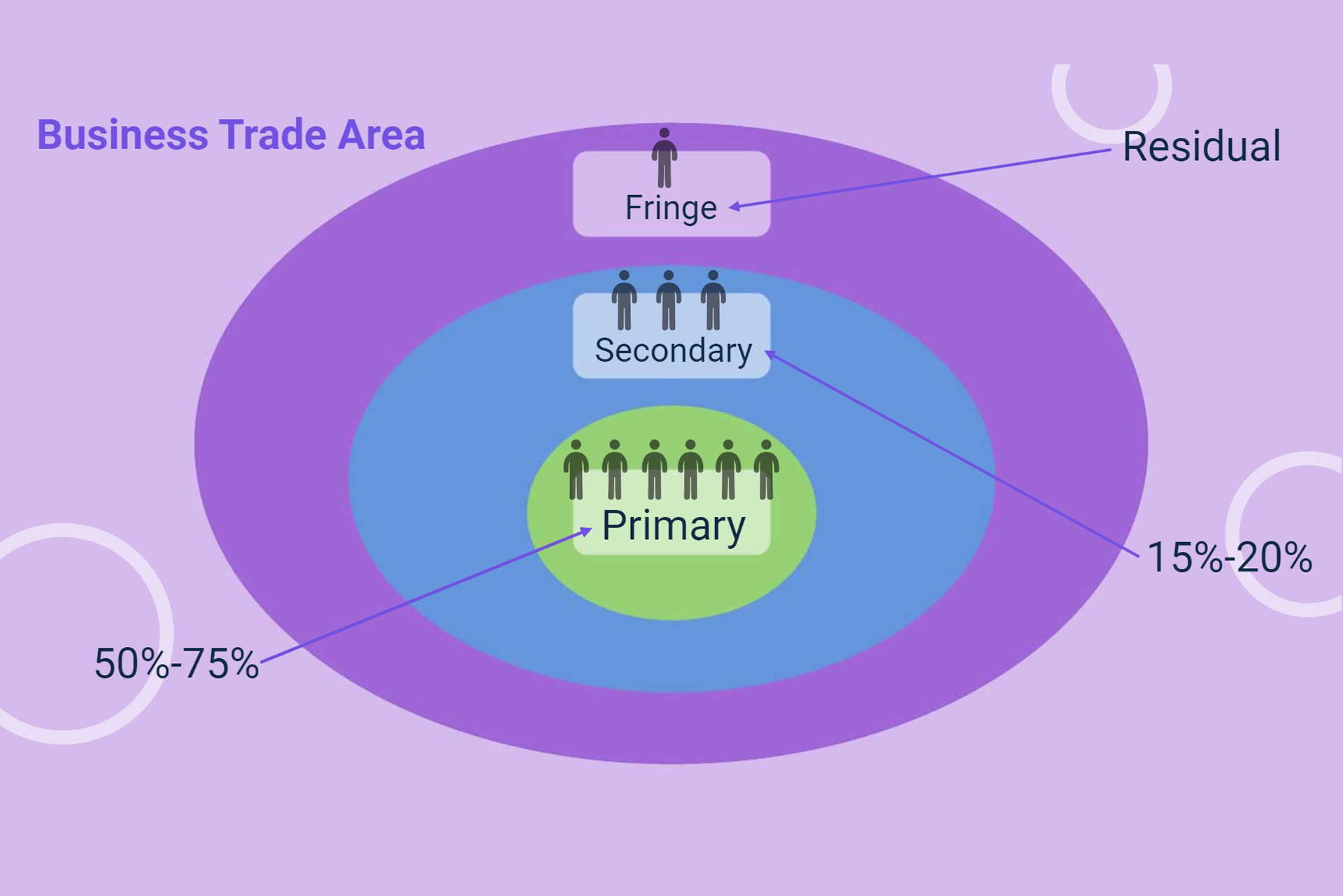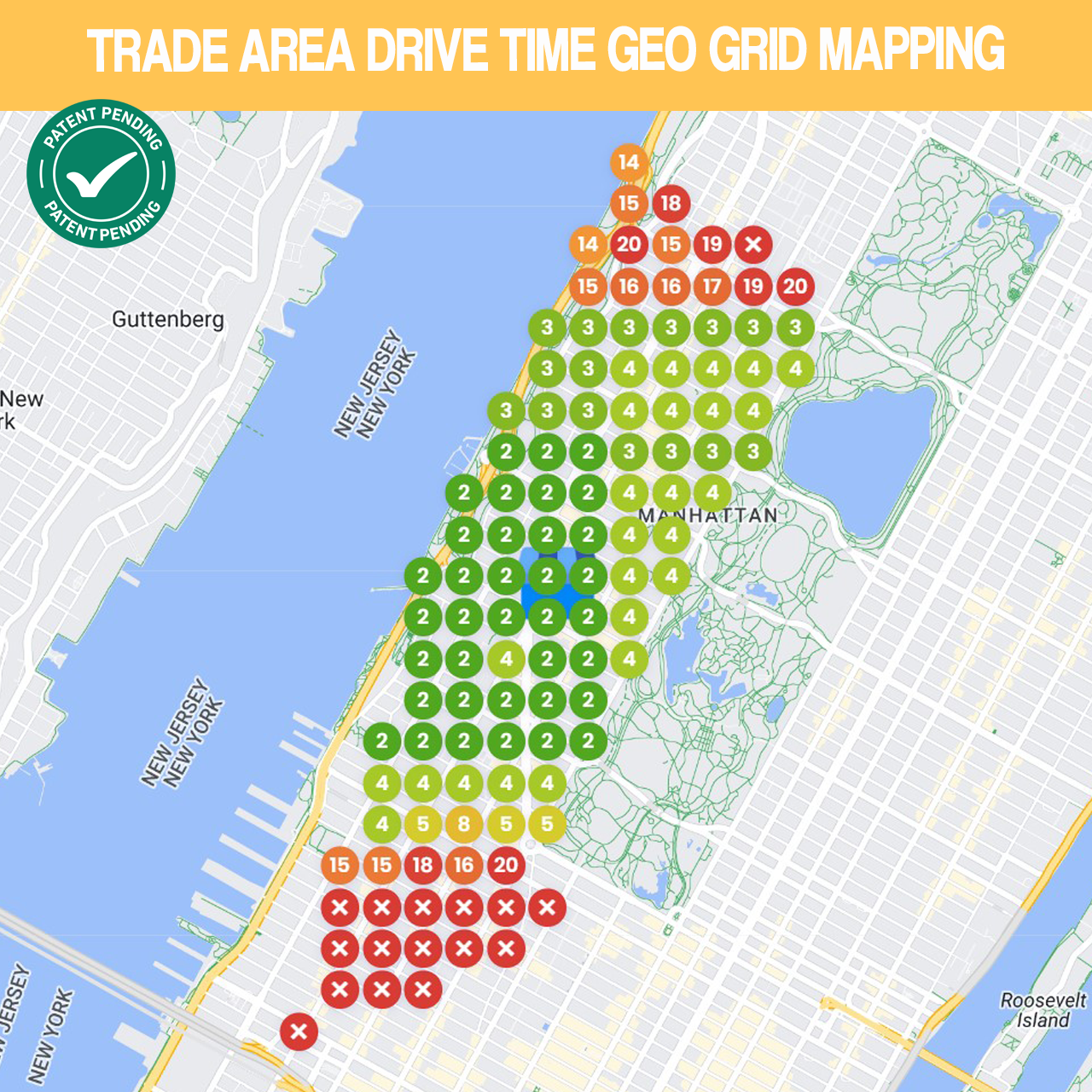Insights and Strategies for Trade Area Analysis
Whether launching a new local business or franchise , or refining an existing one, correctly establishing your trade area is fundamental to achieving long-term success in local business marketing.

What is a trade area?
A trade area is the geographical boundary where a business anticipates attracting the majority of its customer base. It emanates from the core address of the business and extends outward, based on either distance radius, or more accurately by drive-time to the location. Traditionally, this area is subdivided into three primary zones:
a) Primary Trade Area: 50-75% of a business's customer base.
b) Secondary Trade Area: where 15-20% of a business's customer base.
c) Fringe Trade Area: Occupying the outermost fringes, this zone captures the smallest, residual portion of a business's customers.

Understanding trade areas is paramount for strategic decision-making. Whether in opening a new local business to determine optimal site selection, or defining an existing local business, to refine marketing strategies. In identifying competitive landscapes, determining an accurate trade area creates more informed business decisions and targeted customer engagement.
How should we define a trade area effectively?
The most common approaches involve either drive-time, reflecting the time customers are willing to travel, or radius, delineating the geographic distance in miles. Among these methods, drive-time emerges as the more precise tool for establishing accurate trade areas, particularly for local businesses or franchises.
Numerous factors influence the delineation of trade areas:
Population density: Areas with smaller populations typically yield larger trade areas, as individuals are more inclined to travel greater distances for goods and services. Drive-time analysis provides a more nuanced understanding of this dynamic.
Competitive landscape: Accurately identifying the trade area via drive-time facilitates pinpointing true competitors within that boundary, thereby aiding in strategic marketing endeavors to capture market share effectively.
Traffic patterns: Infrastructure such as highways, wide boulevards, and public transit hubs significantly impact trade areas. Proximity to these points facilitates drawing customers from broader regions.
Natural landmarks: Features like mountains and rivers influence traffic flow and, consequently, the delineation of trade areas as they often dictate accessible routes.
Location type: Different business types exhibit varying drive times based on their location and competitive environment. For instance, a 10-minute primary trade area in New York City may span only 2 to 3 miles due to high population density, while a similar trade area in a rural Oklahoma town could extend up to 20 miles because of minimal traffic congestion. Employing a standardized trade area solely based on distance fails to consider these critical factors, resulting in inaccuracies.

Defining trade areas accurately through drive-time analysis offers numerous benefits for local businesses:
Informed location decisions: Understanding trade areas by drive-time assists in selecting optimal business locations, maximizing visibility and accessibility to target audiences.
Strategic marketing: Trade areas guide advertising efforts by pinpointing regions with high concentrations of most-likely customers, ensuring marketing resource allocation is effective.
Overall business planning: Trade areas serve as a foundation for broader business strategies, influencing decisions ranging from inventory management to staffing.
Optimal location selection: for new businesses is facilitated by identifying trade areas with a high concentration of potential customers, instilling confidence in new location choices.
Insights: derived from drive-time trade area analysis enable businesses new or existing, to craft targeted marketing strategies, enhance ROI by focusing resources on specific customer segments and know who are the other competitors targeting them for market share within their own trade-area..
Growth & Expansion: possibilities from drive-time Trade area analysis by evaluating the feasibility and potential success of new locations.
Primary, secondary & fringe Trade Areas laid over 10 minute drive-time Geo-Grid Map from Aldus Local helps agencies & clients determine actual competitors and areas of marketing in which to focus.
For agencies seeking to properly define the trade areas of local clients while gaining insights into their real competitors and customer demographics, a new Google Management and SEO Platform for small business called Aldus Local proves invaluable. Aldus Local serves as a comprehensive online marketing solution, not only defining trade areas via drive-time analysis but also providing crucial insights into demographics, competitors, and Google ranking details essential for effective online marketing efforts. With a clearly defined drive-time trade area, marketing endeavors become more targeted and cost-effective. Utilizing Aldus Local to define your business's trade area yields several benefits. Once competitors within the designated trade-area are mapped, Aldus recommends top-searched keywords used by prospective customers within the trade area and then determines current local and organic rankings. A Local Optimizer tool in Aldus continually helps rank the Google Business Profile and associated website by reverse engineering the top competitors ranking higher in search visibility in the Google Map Pack each week. The Local Optimizer tool compares over 250+ Google ranking factors against top competitors for the same keyword searches. Leveraging AI capabilities, Aldus Local automates many SEO tasks for each client ultimately boosting market share within the designated trade area while simultaneously increasing map pack rankings in the process.
The Aldus Local Dashboard tracks each trade area and uses reverse engineering SEO tactics to increase market share and dominate local search terms by prospective customers.
Additional features of Aldus Local include review solicitation plus AI response and management, AI-powered Google posting, scheduling, with multi-posting capabilities. There is even an auto-media tool that targets low ranking GPS points in the trade area through photos used in posts and included galleries. This user-friendly, yet robust tool facilitates enhanced click-through rates, increased search visibility, and a serious competitive edge against competitors who are fighting for market share in primary and secondary trade-areas. Aldus empowers businesses to define and implement essential SEO strategies, select optimal locations for new operations, refine existing ones, and tailor local marketing tactics accordingly. Moreover, agencies can leverage Aldus Local to access precise data necessary for enhancing their clients' search visibility and overall ranking. The platform's white-label capabilities ensure agencies and franchises seamless analysis and reporting, easily shareable and exportable to clients and members across various local industries.
By John Bermel - Founder / Aldus Local

